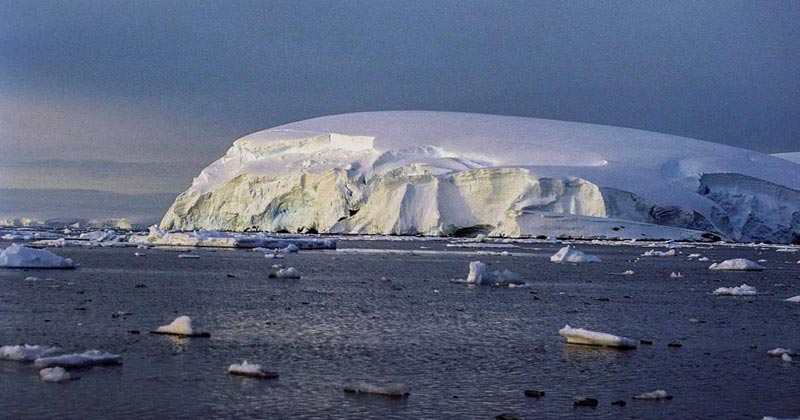Researchers have discovered a huge methane leak in the Southern Ocean. Normally, methane-eating microbes should keep such a leak at bay but they cannot keep up with it. The researchers are extremely concerned because greenhouse gas has a strong effect on the climate and might have adverse effects on the climate.
Methane has leaked out of a hole in the bottom of the Southern Ocean probably for thousands of years. But it is the first leak of this kind in the Antarctic that scientists have discovered. The emerging gas quantities are still relatively small, yet, the discovery of the largest leak till now, worries the scientists because methane is an extremely potent greenhouse gas that has a much stronger impact on the climate than the carbon dioxide (CO2) from the combustion of fossil fuels.
The leak is in McMurdo Sound, a bay in the Ross Sea which is ten meters deep. Divers first noticed it in 2011, but it was only from 2016 that it was scientifically researched. Now a group of microbiologists presented the results of this investigation painting a bleak picture of the potential impact of the gas leak on the climate.
Decaying algae release methane at the bottom of the sea

The methane apparently comes from algae that have settled on the ocean floor for thousands of years. In the meantime, they are buried under sediments and are increasingly decaying. According to expert estimates, a total of around a quarter of the submarine methane deposits on earth are stored under the Antarctic seabed.
But why the leak originated is still unclear. The leak is on the edge of an active underwater volcano, but this location does not seem to be the cause. Global warming is also unlikely to play a role because the Ross Sea has not yet heated up significantly.
The gas could be released on a large scale if climate change causes water temperatures to rise at the South Pole as well. But there is another reason to worry because usually, microbes use the methane directly at its sources on the seafloor as an energy source that fuels their metabolism. It is converted into less climate-damaging CO2 and some by-products.
Methane-eating microbes cannot keep up

It is different from the active leak in the Ross Sea. The methane eaters settled there very slowly, and they only grew in small numbers. In the five years from discovery to sampling, only a 70 meter long white bacterial mat had formed on the volcanic cone. However, the anaerobic species that capture methane and use it as an energy source only made up four percent of their total mass.
This process is the world’s most important sink for the greenhouse gas that disappears from the environment. The scientists suspect that the bacterial community is still at an early stage. It could take another five to ten years before the microbes are completely adapted to this environment and consume the methane.
Its release from underwater reservoirs such as frozen methane hydrates or permafrost areas is one of the tipping points in the climate system. This is what climate researchers call as the points at which ecosystems of critical importance change into a new state or in simple terms tip over. So far, scientists have identified 15 such tipping points that may further intensify Global warming.
Also Read – What are the Reasons for opposing Nuclear Energy according to Environmentalists?
After CO2, methane is the second most important greenhouse gas that mainly enters the earth’s atmosphere through leaks. In total, methane causes 23 percent of global warming caused by greenhouse gases. Over 100 years, its warming potential is 28 times higher than that of CO2. Its concentration is normally lower than this, but industry and factory farming have tripled methane levels in the past decades. The Corona pandemic has slowed down CO2 emissions but has caused the methane to rise further. This is moving the world further and further away from a path that helps avoid the worst effects of climate change.
Scientists believe that significant amounts of methane are stored under the Antarctic ice. The big question now is how much the formation of methane-eating bacterial communities lags behind the emergence of new leaks when the ice sheet shrinks.


